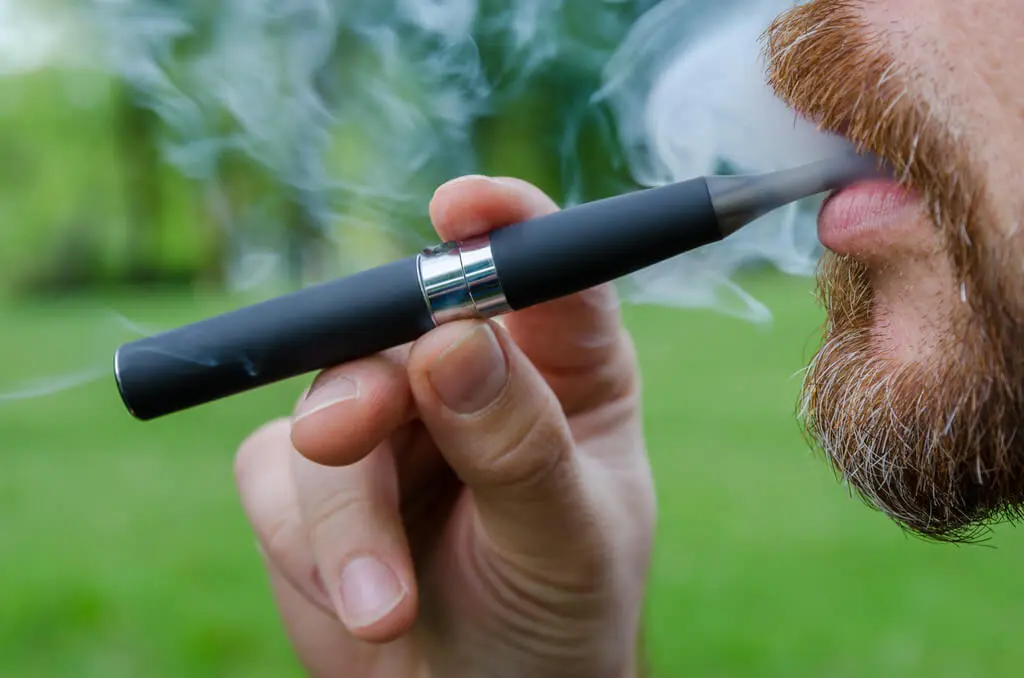Introduction: The Burning Question: Which is More Harmful – Cigarettes or Vaping?
If you’ve found yourself pondering the age-old debate of traditional cigarettes versus vaping, you’re definitely not alone. As a health conscious group, we’re here to shed some light on this burning question and help you navigate through the haze of information.
We all know that smoking is a habit with serious health consequences. The thing is, vaping entered the scene promising a “safer” alternative, but is it really? Let’s delve into the details and get you the information you need to make an informed decision about your health.
Understanding Traditional Cigarettes
First things first, let’s talk about those regular cigarettes. We all know they’re filled with a cocktail of chemicals that create the signature smoke, but did you know they also contain toxins that can wreak havoc on your body? Think respiratory and cardiovascular issues, not to mention the scary connection to diseases like lung cancer.
The Emergence of Vaping
Vaping involves inhaling vapor from e-liquids using devices like vaporizers. The allure here is that vaping seems to expose you to fewer harmful compounds compared to cigarettes. However, there’s a twist – the long-term effects of vaping are still a bit of a mystery. Inhaling those aerosolized substances might not be as innocent as it appears.

Comparative Analysis of Health Risks
Now, let’s put traditional cigarettes and vaping on the scale. Cigarettes are notorious for causing lung diseases, heart problems, and even increasing mortality rates. Vaping, on the other hand, might cause respiratory irritation, nicotine addiction, and other potential yet unconfirmed risks. Both share a common ingredient: nicotine, the not-so-friendly substance that hooks you in.
Current Research and Expert Opinions
You might be wondering, “What does science say?” Well, recent studies have compared the two, but the results vary. Some experts believe that vaping could be less harmful than smoking, while others remain cautious due to the lack of long-term data. It’s a bit like comparing apples and oranges, with a touch of uncertainty thrown in.
Smoking Cessation: The Ultimate Goal
Quitting smoking brings a bunch of health benefits like improved lung function and a healthier heart. Now, here’s where vaping steps in – it’s been considered a potential tool for smoking cessation. Some use it as a way to reduce their nicotine intake gradually.
Making an Informed Decision
When it comes down to it, the choice between smoking and vaping isn’t black and white. Consider your health, preferences, and goals. Are you looking for short-term satisfaction or long-term well-being? It’s essential to stay updated on the latest research and regulations to make an informed call.
Resources and Support
If you’re looking to quit smoking or want more information on vaping, reach out to reputable sources like health organizations, cessation programs, and medical professionals. They’re there to help you on your journey to a healthier you.

Vaping vs. Smoking: Breaking Down the Facts
Alright, let’s dive deeper into the world of vaping and smoking. Strap in, because we’re about to unravel some essential insights that will help you make an even more informed decision.
Vaping: What’s the Deal?
Vaping, short for vaporizing, involves inhaling vapor produced by heating an e-liquid or vape juice. These e-liquids come in a variety of flavors, making the whole experience a bit more exciting than the usual tobacco smoke. The vaporizers, often called e-cigarettes or vape pens, are designed to mimic the sensation of smoking while minimizing exposure to harmful substances found in traditional cigarettes.
One of the major attractions of vaping is the idea that it’s less harmful than smoking. This claim is rooted in the fact that vaping doesn’t involve burning tobacco, which is the primary source of the countless toxic chemicals present in cigarette smoke. Some studies suggest that vaping produces fewer harmful compounds, which could potentially reduce the risk of certain health issues. However, keep in mind that vaping isn’t entirely risk-free – we’ll get to that shortly.
Vaping’s Unknown Territory
Here’s where things get a bit tricky. While vaping might have some advantages over traditional smoking, it’s important to acknowledge the gaps in our understanding. Unlike smoking, which has been studied for decades, vaping is relatively new on the scene. Long-term research into its effects is still in progress, so we can’t say with absolute certainty what the health outcomes will be years down the road.
What we do know is that the aerosol produced during vaping contains not only nicotine but also other potentially harmful substances. These can vary based on the e-liquid ingredients, the device, and even the heating process. Plus, the flavored e-liquids might sound delicious, but some of those flavoring chemicals can be problematic when inhaled.
Nicotine: The Common Thread
Now, let’s talk about the elephant in the room: nicotine. Both traditional cigarettes and vaping deliver nicotine, the addictive component that keeps you coming back for more. Nicotine itself isn’t harmless – it’s associated with an increased heart rate, elevated blood pressure, and addiction. And yes, that craving you feel when you’re trying to quit? That’s nicotine’s doing.
When it comes to vaping, nicotine is usually present in e-liquids, and you can adjust the nicotine levels to some extent. Some people use vaping as a way to gradually reduce their nicotine intake, potentially making it easier to quit in the long run. But remember, vaping isn’t a magical solution – it still introduces nicotine into your system.
The Power of Nicotine Addiction
So what exactly is nicotine, and why is it so alluring? Nicotine is a naturally occurring stimulant found in tobacco leaves. When you smoke a cigarette or vape an e-liquid containing nicotine, it rapidly enters your bloodstream and reaches your brain. Once there, it triggers the release of dopamine – the “feel-good” neurotransmitter.
This surge of dopamine creates a pleasurable sensation, reinforcing the desire to repeat the action that caused it. Over time, your brain becomes accustomed to this cycle, and cravings develop. This is the core of addiction – your brain associates smoking or vaping with pleasure, making it incredibly hard to quit.

The Bottom Line
As we unravel the mysteries of vaping and smoking, keep in mind that there’s no one-size-fits-all answer. Your health, preferences, and goals are what truly matter. If you’re looking for a way to quit smoking, vaping might offer some benefits, but it’s not without its potential risks. And if you’re not a smoker, well, avoiding both is the best course of action to keep your lungs and heart in tip-top shape.
The Battle to Break Free
Quitting smoking or vaping isn’t just about overcoming a physical habit; it’s about rewiring your brain. Nicotine withdrawal symptoms can be intense and include irritability, anxiety, difficulty concentrating, and strong cravings. These symptoms often make it challenging to quit cold turkey.
Nicotine replacement therapies (NRTs) like nicotine gum, patches, and lozenges can be helpful tools in managing withdrawal. Vaping, with its adjustable nicotine levels, can also be seen as a harm reduction strategy, allowing you to gradually reduce nicotine intake while addressing the psychological aspects of the addiction.
A Path to Freedom
If you’re looking to break free from nicotine’s grip, it’s crucial to have a plan in place. Seek support from healthcare professionals, cessation programs, and support groups. Remember, quitting is a journey, and setbacks are a part of it. The key is to stay motivated, remind yourself of the health benefits, and be kind to yourself throughout the process.

Navigating Your Path: Making the Right Choice for You
Welcome to the final stretch, my friends. We’ve covered a lot of ground – from comparing vaping and smoking to understanding nicotine addiction. Now, let’s tie it all together and help you navigate the path forward, armed with knowledge and a clear sense of direction.
The Art of Decision-Making
When it comes to deciding between smoking and vaping, there’s no one-size-fits-all answer. Your choice will depend on various factors, including your current health status, your goals, and your preferences. Are you looking to quit nicotine altogether? Are you hoping to gradually reduce your nicotine intake? Or are you seeking a harm reduction approach?
Consider your long-term well-being. While vaping might seem like a safer alternative, it’s not entirely risk-free. Its potential long-term effects are still uncertain, so it’s important to proceed with caution. And remember, if you’re not a smoker, avoiding both smoking and vaping is the best way to protect your health.
Weighing the Pros and Cons
Let’s do a quick recap of the pros and cons we’ve discussed:
Traditional Cigarettes:
Pros: Well, it’s a hard one. The short-lived nicotine rush and social aspects, perhaps?
Cons: Lung diseases, heart problems, addiction, and a whole lot of harmful chemicals.
Vaping:
Pros: Potential harm reduction, customizable nicotine levels, and fewer harmful compounds compared to smoking.
Cons: Uncertain long-term effects, potential respiratory issues, and exposure to unfamiliar chemicals.
Seeking Professional Guidance
Making an informed decision requires more than just reading an article. Reach out to healthcare professionals who can provide personalized advice based on your unique circumstances. They can guide you through smoking cessation strategies, help you explore nicotine replacement therapies, and offer support for your journey.
Staying Informed and Adapting
As research continues and regulations evolve, staying informed is crucial. Keep an eye on reputable sources for updates on vaping and smoking-related studies. Remember that your decision isn’t set in stone – you can adapt your approach as new information emerges.

Final Thoughts
So, my friends, whether you’re a smoker, a vaper, or someone considering the options, the key is to prioritize your health. Your well-being deserves attention and care. Use the knowledge you’ve gained to make choices that align with your goals and values.
It’s not an easy journey, but it’s an empowering one. Whether you’re taking steps to quit smoking, exploring vaping as a harm reduction strategy, or opting for a nicotine-free path, remember that you’re taking control of your life and health.
As you embark on this journey, remember that you’re not alone. Professionals, resources, and communities are here to support you every step of the way. Your health matters, and your journey toward a healthier you starts now.





